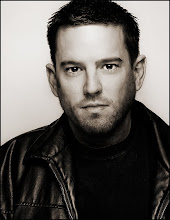Hey y'all,
I recently posted this on the Flickr Strobist discussion forum in an effort to help out those that may have not realized the point I am trying to get across. Check it out:
Please note the word "here" when I refer to a photo. Click on "here" for a link to the photo being referred to.
Light Power
I have recently been asked a few times about what setting I had my lights at power-wise. The following is a response to one of such inquires. In relation to the shot that can be found here.
“I was using a Alien Bee 400 mono-light dialed all the way down. I have no idea how many watt seconds or what percentage of full that is. I just dial it in for the look I want. The power of the light is not so much the issue seeing that it could vary from camera sensor to camera sensor, light modifier to light modifier etc.
Learn to think out what you want the shot to look like lighting wise and then apply what you know or have learned about basic lighting principles in the shot to create that look.
In this case I wanted the light to fall off quickly and have a shallow depth of field at the same time. This meant I needed to have the light right up on her face for the light fall off, and shoot at F2.8 for the shallow depth of field. In order to get the background to go dark I shot it at 1/250 of second... the max sync speed for my camera to kill the ambient light in the room. So to get all this to work meant shooting at a low ISO and very low power on the strobe to keep from blowing out her face. Make sense?
Once you have started thinking like this, the technical stuff just comes more natural to you and is something that you just do... leaving the rest of your brain open for your interaction with your subject and/or client. I hope all this helps.”
I thought it would be good to share this response with everybody due to me remembering how I felt when I realized this in school. For the first three quarters I would literally stay in a studio and work on a still-life shot for as much as 48 hours straight with only little breaks here and there. Lighting and re-lighting the same thing over and over again because I just was not sure of what I was looking for. I learned a lot from doing this… but it really was not healthy due to the lack of sleep and eating that went along with it. I was just spinning my wheels due to no sense of direction.
It all changed one night when I was doing the shot found here.
I had no Absolut ad to actually compare (i.e. reverse engineer) my lighting to as a reference at the time so I just sat down for about ten minutes and thought out in my mind how to get that look. I came up with something in my head that made sense to get it and got up and took the one light and made it happen. Looked thru the camera and there it was. It was such a relief to not spend hours and hours fumbling around on something for once.
A couple of days later I had an idea for another assignment that was my own unique vision, not something I was copying like the Absolut ad style. Once again I reasoned how to set my lights to get what I had in my head and then just did it. Looked through the camera and there it was. I was done in about 45 minutes (not including the set building and design), which is pretty quick considering I was shooting with a 4x5 view camera. Once again… what a relief it was to have it come together so quick. That shot can be found here.
My point behind all this and reason for sharing it with you is that sometimes the hardest thing to overcome lighting-wise is having a clear idea of what you want. Sometimes you may have a “happy accident” and stumble upon something you really like by experimenting… and there is nothing wrong with that. But having a clear idea of what you want and knowing how to create it in a timely manner can be a huge plus…especially when working with people that have a little less patience than a bunch of apples or an Absolut bottle.
My final point…. the kind of light, whether it is a mono-light, a 283, a SB800, a reflector, a desk lamp, a window, etc. is not so much the issue. The basic principles David teaches thru his site can be applied to lighting in general regardless of the source. Getting too hung up on lighting details such as strobe power can prevent you from seeing and or understanding the big picture.
I hope all this is of some help to some of you out there. I know it was a huge discovery for me in school and I just thought it was worth sharing with all of you.
That's all I got for today folks. I will work on my blogging skills and figure out how to display multiple photos throughout a post.... I just really did not feel like trying to figure out the HTML for it tonight. Who came up with HTML anyway?
Keith
Subscribe to:
Post Comments (Atom)





No comments:
Post a Comment